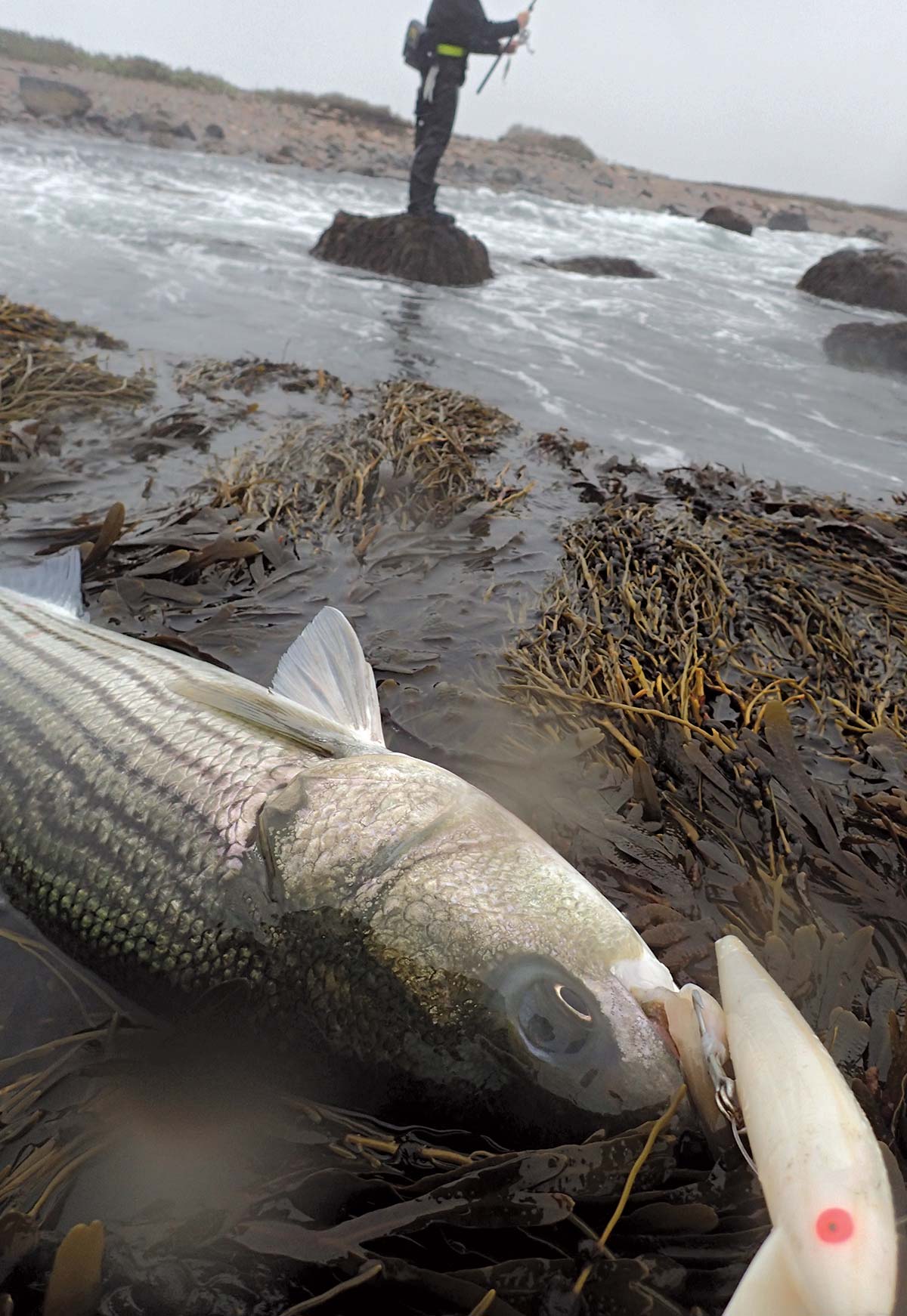
The Cotton Cordell 7-inch Red Fin is a popular lure across all regions, structure, and seasons in the surf, and has been for many decades.
Casting distance anxiety is real in surfcasting. Anglers, especially beginners, cannot seem to accept that many of the fish caught are very close to shore. Many anglers associate water further away from the beach with larger fish. This likely comes from the fact that boat fishermen do indeed catch more fish than surfcasters. However, there is no need in the majority of places we fish (or, at least where I fish) to cast 150 yards. Indeed, as I have become more and more engrossed in fly fishing, I have been metaphorically “hit over the head” with the idea that many fish are available within 100 feet of the shore. It’s remarkable how we adapt when we have no choice. As a fly fisherman, I simply have no choice but to accept I will never cast 50 yards.
The Cotton Cordell 7-inch Red Fin is a popular lure across all regions, structures, and seasons in the surf and has been for many decades. Yet, because of casting anxiety, almost all anglers seem to fish it loaded these days. This is at least in part due to the remarkable improvements in casting distance available in plastic swimmers such as the Daiwa SP Minnow and Shimano Colt Sniper in the last decade. Going back to an unloaded, factory Red Fin (or a Bomber A-salt) after casting an SP can feel like you’re fishing with a dry sock; it is that significant of a difference. Yet, the Red Fin will out-fish an SP (or just about any other plastic swimmer) in a vast array of situations due to a myriad of factors including a bigger profile, different action, and shallow swimming abilities. The secret for me has been fishing it unloaded as much as I possibly can. Yes, I still fish loaded Red Fins regularly and they are an essential tool in my bag. However, everything has its time and place, and if you also don’t include a few unloaded variants in your arsenal, you’re missing out.
Once you get over the abysmal casting distance of the unloaded Red Fin, the benefits can be remarkable. Specifically, I think the action is much better all-around; if you want to fish it subtle and slow, you are still rewarded with a nice wobble-and-roll. I also find the plug more effective on a slow retrieve in a gentle outflow or a tide or wind sweep. I can let the plug drift along more easily, while also retaining some of that delicious wobble. Loaded Red Fins are far diminished in this capacity.
Further, you can also go fast and frantic, and the unloaded plug will stay on or near the surface. Going fast with a loaded Red Fin will make it dive, and this can cause hang-ups in heavy structure like boulder fields. Therefore, I like how I can vary my retrieve speed far more with an unloaded plug, versus a loaded one. I also find that fishing an unloaded Red Fin over skinny, sandy flats in the fall to be one of the most effective ways to mimic sand eels. The unloaded plug fished extremely slowly is very subtle and quiet, mimicking the prey the stripers are feeding on. It’s big and I believe it looks like a truly exceptional sand eel, so fish can’t resist it. In these situations, particularly when it’s very calm, I find any plug that dives towards the bottom or has any kind of a rattle will be completely ignored. When the wind is at my back on a sand beach, the unloaded Red Fin is one of the first plugs out of my bag.
To make fishing an unloaded Red Fin easier, I use and encourage you to consider a lighter surf-setup than fishing typical, larger plugs. A lighter, softer rod helps, but even more so I find fishing a 20-pound, 8-carrier braid (like Spiderwire Invisibraid or Suffix 832) to make a huge difference in getting the plug out there. This is also an excellent set-up to fish other small or light plugs, like 9-inch Lunker City Slug-Gos, soft plastic swimming minnows, and other plastic swimmers like Bombers and 1-ounce Mag Darters. You just have to set your drag appropriately and be aware of any substantial structure. These lighter set-ups do not have the power to haul big fish out of heavy rocks or current, so best to keep that in mind before you head to the beach.



